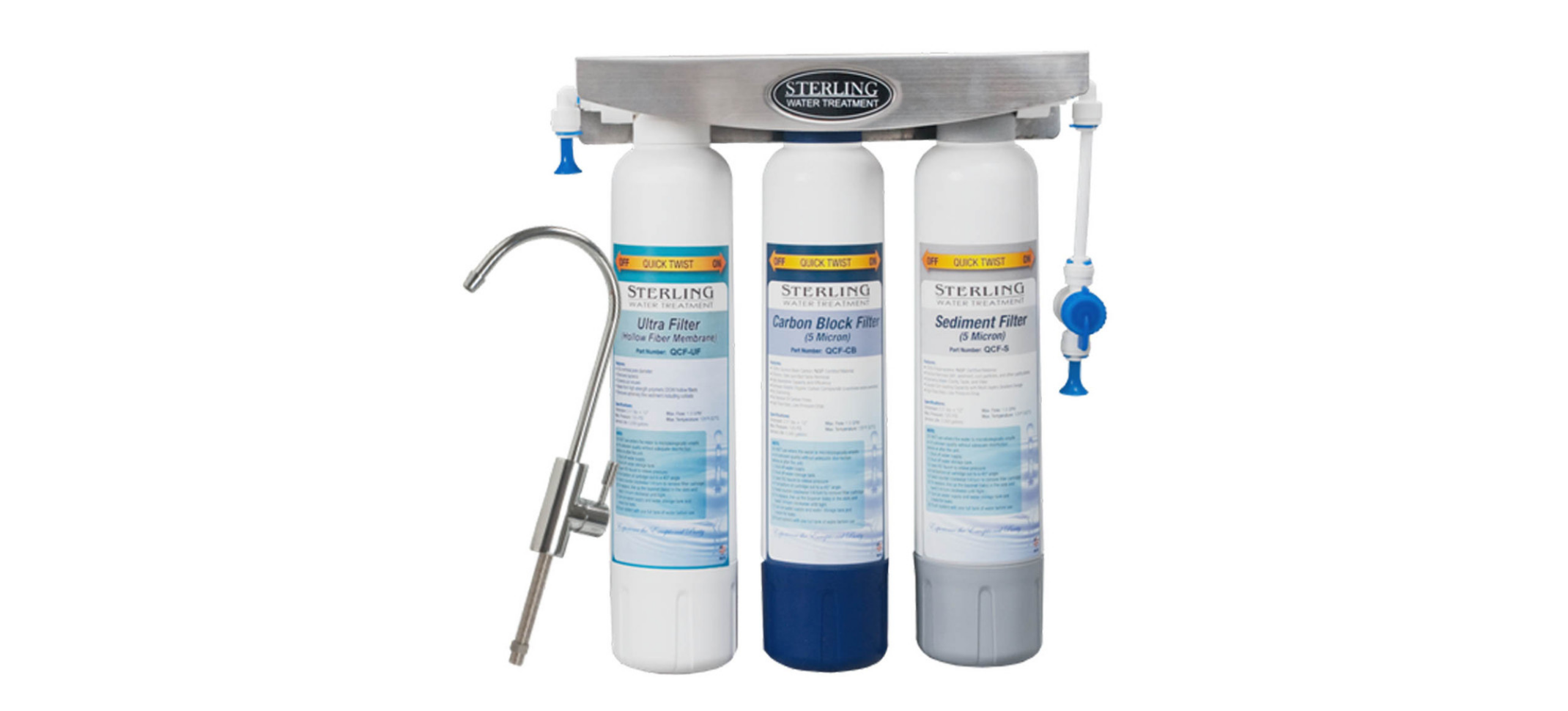The Ultimate Guide to Under-Sink Water Filtration Systems
Having access to clean, healthy water is important for every home, but not all tap water is up to standard. Enter the under-sink water filtration system—an effective, low-maintenance, and environmentally-friendly solution for ensuring your home’s water is better-than-bottled.
Whether you're a homeowner wanting better water quality, a DIY enthusiast eager for an installation project, or a plumber looking to recommend the best system to clients, this guide has everything you need to know about under-sink water filters.
From understanding their benefits to choosing the right type, and maintaining them, let's break down everything about these powerful yet compact filtration systems.
What Makes Under-Sink Water Filters a Game-Changer?
Unlike countertop filters or pitcher filters, under-sink systems are installed directly under your kitchen sink and connect to your cold-water line. This means that only one faucet delivers filtered water, but the system provides several notable advantages:
- Effective Filtration: Many models, including reverse osmosis systems and multi-stage filters, remove a wide range of contaminants, including chlorine, lead, VOCs, and bacteria. Note: RO systems require a separate, specialized faucet.
- Convenience: With filtered water directly available at the tap, there's no need to refill pitchers or dispensers.
- Space Saving: Installed under the sink, these systems remain out of sight, ideal for kitchens with limited counter space.
- Cost Efficiency: They reduce the need for bottled water, saving money and cutting down on plastic waste.
How Do Under-Sink Water Filtration Systems Work
Under-sink filters use advanced filtration processes to remove several contaminants effectively. Here’s a quick look at the typical filtration stages:
1. Sediment Filter
This initial stage traps larger particles like sand, rust, or dirt to prevent clogging in subsequent stages.
2. Carbon Filter
Water passes through a carbon block or activated carbon granules, which absorb chemicals like chlorine, pesticides, and organic compounds that affect the water’s taste and smell.
3. Reverse Osmosis (Optional)
High-end systems use a reverse osmosis (RO) membrane to remove dissolved solids, including heavy metals like lead, nitrates, and fluoride. Note: If your home is on a well, an RO system may be your only option, depending on the quality of the well. These systems require remineralization and a special, RO-compatible faucet.
How to Choose the Best Under-Sink Water Filtration System for Your Home
When shopping for the right under-sink filter, keep the following factors in mind:
Your Water Source and Contaminants
First, identify the contaminants in your local tap water. A lab-tested water quality report can provide critical insights. For example:
- If chlorine or unpleasant odors are a concern, a carbon filter may suffice.
- For heavy metals like lead or nitrates, opt for reverse osmosis systems.
- For microbial contamination, consider a UV component.
Types of Filtration Systems
Here are the primary options:
- Carbon Filters: Best for improving taste and removing chlorine, VOCs, lead, cysts, and more.
- Reverse Osmosis Systems: Ideal for heavy-duty filtration, removing up to 99% of contaminants. This may be the only option for some homeowners with well water; RO requires a separate faucet.
- Multi-Stage Filters: Combine multiple filtration technologies to target a wide range of impurities.
Size and Space
Evaluate the space under your sink to ensure the system fits comfortably. Compact models like the Everpure H-54 or Environmental Water Systems Max Flow are excellent for small kitchens or apartments.
Certifications
Look for systems certified by standards like NSF/ANSI. These certifications confirm the filter’s ability to remove specific contaminants:
- NSF/ANSI 42 for chlorine, taste, and odor.
- NSF/ANSI 53 for lead, VOCs, and heavy metals.
- NSF/ANSI 58 for reverse osmosis systems.
Ease of Installation and Maintenance
Select a filter system with straightforward installation and filter replacements. Many systems, like the Environmental Water Systems Max Flow, include quick-change filters that twist on and off without tools.
Maintenance Tips for Your Under-Sink Water Filter
Once you’ve installed your filtration system, maintaining it is critical to ensure its long-term performance. Here’s what to keep in mind:
1. Replace Filters on Time
The frequency of replacement depends on the specific filter, your water usage, and potentially your water quality:
-
- Sediment and carbon filters typically need changing every 6–12 months.
- Reverse osmosis membranes can last 2–5 years.
Signs your filter needs replacement include a decrease in water flow, a return of unpleasant tastes or odors, and sediment buildup.
2. Monitor Water Flow
If the water flow rate becomes noticeably slower, check the filter for any clogging or debris.
3. Test Your Water
Periodically test your filtered water quality to ensure the filter is working effectively.
4. Follow Manufacturer Guidelines
Stick to the instructions provided by the manufacturer for optimal performance and longevity.
Under-Sink Filter Recommendations for Every Need
Choosing the right under-sink filter can be overwhelming, so here are some recommendations to suit various requirements:
Best Overall: EWS SS-2.5 Essential Max Flow
Combines a carbon block filter with high-flow capability, perfect for families or high-demand households. Plus, simple twist-off, twist-on annual filter replacement, and a great price tag.
Best for Small Applications: Everpure H-54 Drinking Water System
Compact yet effective, ideal for apartments or kitchens with limited storage or smaller usages, like pot-fillers and prep sinks.
Best Multi-Stage Filter: Sterling Water Treatment CRS-3 Drinking Water System
Offers a powerful 3-stage reverse osmosis system that filters water at the molecular level. Great for well water, and it comes with the faucet needed for an RO system.
The Verdict on Under-Sink Water Filtration Systems
Investing in an under-sink water filtration system is an important step toward healthier, cleaner water at home. These systems provide a convenient, efficient, and eco-friendly alternative to bottled water while offering the flexibility to customize to your filtration needs.
From eliminating harmful contaminants to saving space in your kitchen, under-sink filters are a simple way to upgrade your home’s water quality.
To find the right system for your home, research your water quality, evaluate your kitchen setup, and explore certified systems like those mentioned above. By choosing the right under-sink filter, you can enjoy clean, fresh water with confidence.
Looking for clean, cold water in your home gym? Check out this in-wall dispenser from Elkay that easily fills water bottles in any space.
Questions? Give us a call at 888-682-5956 or use the chat box in the bottom right corner to chat with one of our real, human experts!







